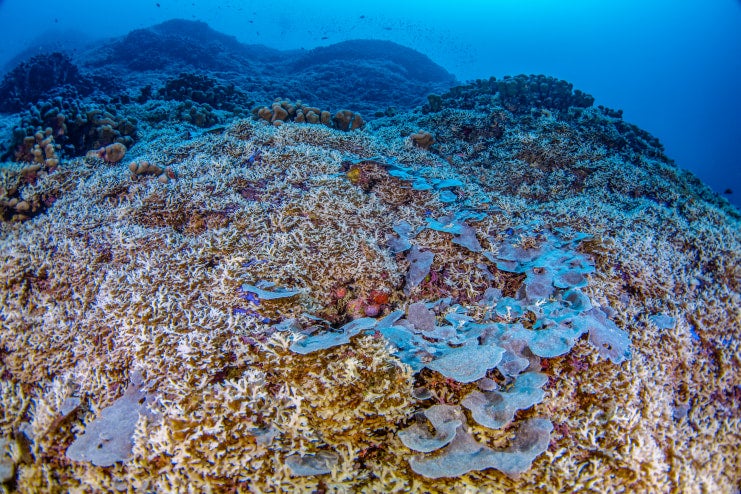Scientists have discovered one of the largest known sea creatures – a coral the size of two football fields – off the Solomon Islands in the South Pacific.
The coral is believed to be several centuries old, and is “so colossal that it can be seen from space,” the National Geographic Pristine Seas team behind the discovery said.
It is almost three times larger than the previous recordholder.
The coral is a standalone structure, unlike a reef which is built on a symbiotic relationship between corals and sea anemones.
The mammoth coral belonging to the species Pavona clavus was found by a research vessel in the southwest Pacific Ocean in October.

The brown mound, 34m wide and 32m long, is a communal organism comprising nearly one billion animals called polyps that make up a larger structure “about the size of a cathedral”, according to New Scientist. The genetically identical polyps function together like they are a single organism.
Given its large size and the slow pace at which corals grow, researchers suspect the mound is at least 300 years old. “Just when we think there is nothing left to discover on planet earth, we find a massive coral made of nearly a billion little polyps, pulsing with life and colour,” National Geographic explorer Enric Sala, founder of the Pristine Seas project, said.
“This is a significant scientific discovery, like finding the world’s tallest tree.”
The megastructure has survived decades of changing environment and appears to be thriving even amid the ongoing global ocean warming.
The scientists, however, are concerned about the fate of this mega coral due to oceans getting more acidic under climate change.
Corals use calcium carbonate in the ocean water to create their skeleton. As the world becomes warmer and the seas more acidic due to excessive global carbon dioxide emissions, it is getting harder for these organisms to remain healthy, they said.
As coral bleaching events become more frequent and severe amid a global temperature rise of over 1.5C, the vast majority of the coral reefs worldwide could be wiped out.

But the researchers are hopeful that the mega coral will remain healthy amid these changes.
“It now stores information on how to survive throughout the centuries. The genetic code of these simple polyps is an enormous encyclopaedia that has written how to survive multiple climatic conditions,” Pristine Seas oceanographer Manu San Felix said.
“While the nearby shallow reefs were degraded due to warmer seas, witnessing this large healthy coral oasis in slightly deeper waters is a beacon of hope,” Eric Brown, a coral scientist who was part of the expedition, said.




